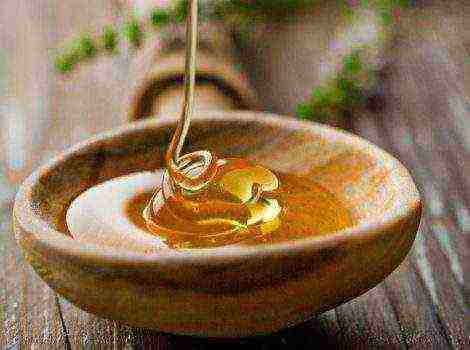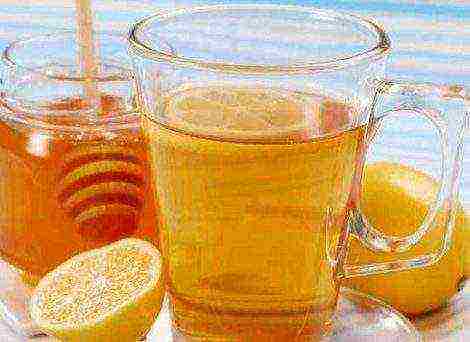Content
- 1 What to do with a bee sting
- 1.1 Bee sting harm and human reaction
- 1.2 Why can they sting?
- 1.3 Why remove a sting and how to remove it?
- 1.4 Medical first aid measures
- 1.5 Bee sting on the head, neck, arm
- 1.6 Bee venom in the eye
- 1.7 How to remove swelling and swelling
- 1.8 If a bee has bitten a child
- 1.9 Treatment with folk remedies at home
- 1.10 The benefits of bee sting. How does it help?
What to do with a bee sting
During the spring-summer period, the life cycle of insects reaches its peak productivity. Bees collect nectar by foraging and pollinating plants.
The little bee delights the child and is respected among adults. But everything changes when she leaves her sting under the skin of a person.
Bee sting harm and human reaction
By implementing it, she instinctively defends herself, dying at the same time. The poison that gets under the skin along with the sting spreads in the blood. Depending on the reaction of the individual, the consequences are different. Redness and slight swelling of the damaged area is considered normal.
Why can they sting?
The uninformed may mistakenly identify the sting of a bee and a wasp. First, wasps do not leave a sting and can sting many times. A worker bee can bite only once, leaves its "tool" and dies. Secondly, the character of wasps is more aggressive than that of bees.
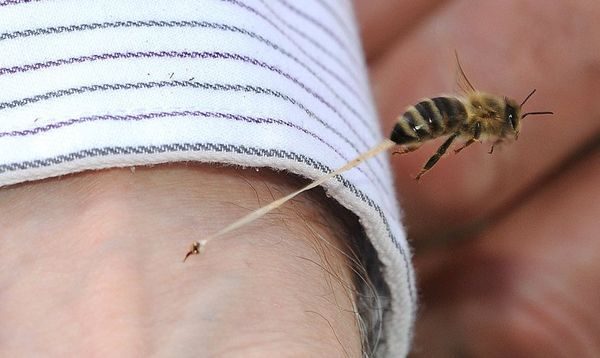
The risk of "humming injury" is increased in the following situations:
- The sharp aroma of perfume, alcohol, spices. During outdoor recreation, in the village, visiting the beekeeper avoid unnecessary "aromatization" of your own.
- Incorrect behavior in proximity with an interested bee: waving hands, screaming, attempts to kill her. It will be rational to "freeze", covering his head, or quietly disappear into the room. No need to try to run! This increases the degree of her aggressiveness.
- Being in the apiary near the hives. A buzzing toiler may even accidentally be near if a person abruptly falls into the trajectory of her departure from the "house". Novice beekeepers should wear long-length clothing, a mask and high gloves. It is imperative to be accompanied by a specialist.
- Pumping honey from bees in the surrounding area. During this period, even the kindest of them turn into attacking aggressors. Knowing about collecting honey from a neighbor in the country, it is better not to go outside for several days, to adhere to safety rules.
- "Barefoot" walks in nature, in the village, especially if there is an apiary nearby. Aged or damaged honey miners no longer fly. Completing their life cycle, they crawl on the ground. You can accidentally step on with your foot. There is a great risk of this situation for children. It increases greatly after inspection of the hives by a specialist beekeeper or pumping out honey.
Why remove a sting and how to remove it?
The little worker bee has an individual defense mechanism. It includes a stinging "needle" and associated poisonous glands. In a calm state, the tip is hidden in her body. In case of danger, it pierces the enemy.
If the rival is another insect, then such a “duel will not be fatal for the honey miner. During interaction with animals and humans, its small notches are pierced into the victim. The bee breaks out, leaving part of the glands at the opposite end of the "tool", dying at the same time.
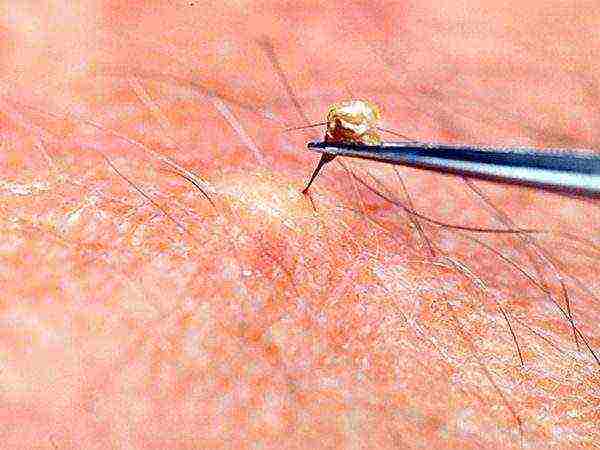
The longer the "poisonous defense tool" is under the skin, the deeper it will penetrate, the more the amount of poison that has entered the bloodstream increases. Trouble is also increased by the risk of inflammation of the bite site, due to the presence of a foreign body in the skin.
The sting has acquired a well-known appearance and functionality over the course of evolution. In its place, the "prehistoric" bees had a tube through which they laid eggs.
Medical first aid measures
More often than not, adults are aware of how their body reacts to a bee sting. With a child, the situation has an unknown outcome. In any case, the initial action must be done quickly. The degree of spread of poisonous substances through the blood of the victim depends on this.
- Get rid of the sting immediately... It is better to do this with sterile tweezers or with clean, disinfected hands. It is important that no residue remains under the skin. Otherwise, and if dirt gets into the wound, inflammation is inevitable.
- Soak a clean cloth or gauze with ammonia or ethyl alcohol, vinegar, a solution of soda or potassium permanganate. Apply to the wound. Keep as long as possible, repetition is possible. This minimizes pain, disinfects and slows down the development of puffiness.
- Can rinse the damaged area body with soap (72% is better) and apply ice.
How to treat and how to smear: medicines, ointments and gels
With severe itching of the bitten area on the skin, you can try to remove it. It is necessary to anoint with fenistil gel, psilo balm, hydrocortisone ointment. How much and how to smear read the instructions. An important condition: you cannot scratch the inflamed area!
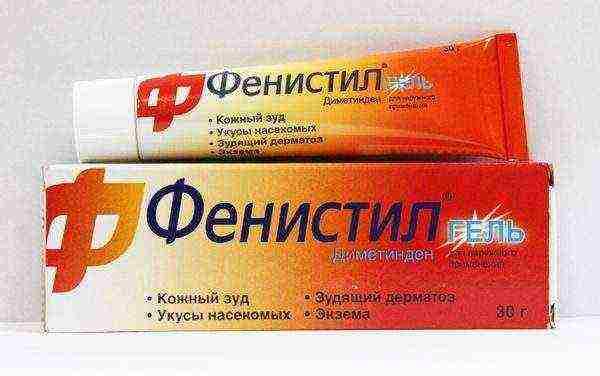
- If you are at risk of severe allergies, take an antihistamine... Some allergy sufferers carry a syringe and appropriate injection medication.
- Abundant warm drink and bed rest.
- The control body temperature... With chills without fever, take a sedative or anti-stress drug. For fever, drink an antipyretic.
- The control heart rate and blood pressure.
- With a severe allergic reaction, urgently see a doctor.
- Artificial respiration and performing chest compressions as needed.
Bee sting on the head, neck, arm
A bite to the head or neck is much more dangerous than a bite to the arm or leg, for example. So, if an individual reacts normally to bee venom, then in this situation the degree of allergization increases.
Exacerbation of symptoms is due to the presence of a large number of blood vessels, including large ones, lymph nodes, nerve endings and vital points. As a result of a sting in the neck or head, severe weakness, rapid heartbeat and breathing, the development of fever, urticaria, neuritis, seizures and even Quincke's edema are possible.
Seek specialized medical attention urgently.
Bee venom in the eye
A bite in the eyelid, at first glance, does not threaten anything except its edema. The eye may become swollen. The consequence can be severe diseases of the eye apparatus, which cause loss of vision.
These include inflammation of the eyelids, mucous membranes, purulent inflammation of the eye tissues, cataracts and glaucoma.
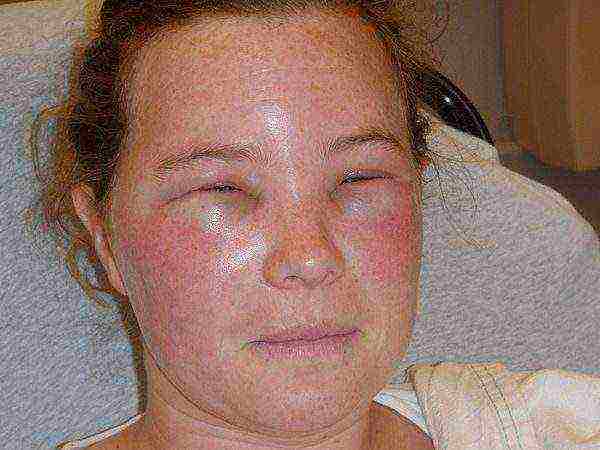
If such a dangerous situation arises, you cannot hesitate, use folk methods and hope that "it will pass by itself."
Treatment and supervision by a professional ophthalmologist.
How to remove swelling and swelling
A bite on other parts of the body is not so dangerous, but the consequences are purely individual.In addition to the harm that entails bee sting in the facial area, it also causes a number of cosmetic problems.
There is a strong swelling of the lip, nose, cheek, chin, ear with a corresponding "wound". The unpleasantness forces you to postpone meetings and events. The situation with the female sex looks especially painful.
On average, the tumor lasts 2-3 days. Its reduction leads to unpleasant itching, as with the healing of any other wound.
Helps the timely use of an appropriate cold compress, the alternate use of several local antipyretics (for example, alternating alcohol lotions from soda), ice, antihistamines and anti-inflammatory folk remedies (for example, herbal tea) reduces the degree of puffiness and accelerates recovery.
If a bee has bitten a child
The danger of initial contact with a bee lies in the unknown reaction of the child's body and its helplessness. Most often, acute allergies are absent.
Going on vacation or outdoors, it is good to have a first aid kit with a children's antihistamine, anti-allergenic and anti-inflammatory ointment, ethyl or ammonia for compresses.
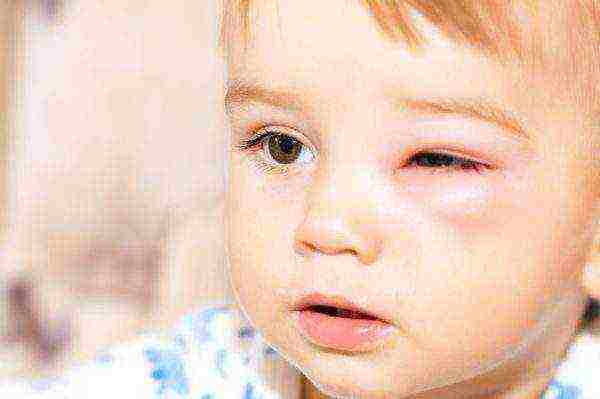
Citric acid or a dissolved aspirin tablet will also work. It is good if there is a special agent that temporarily protects against insect bites. However, in a situation with a child, it must be used with extreme caution, in small doses, avoiding application to the hands and face. Be sure to read the contraindications.
accompanied by a deterioration in breathing and pulse, pallor of the skin along with puffiness, the appearance of cold sweat, and loss of consciousness.
What to do and how to get rid of the consequences
When a shock occurs, the following actions are performed:
- Extract the sting, make a cold compress.
- If possible apply a tourniquet with an indication of the time of execution of this action. The operation is carried out in order to prevent the spread of toxic substances through the blood system.
- Summon ambulance.
- Provide bed rest in compliance with the rule "feet above the head", provide air access.
- If poison enters the oral cavity and mucous membranes - carefully rinse with water.
- Damaged area inject with adrenaline, dissolved in saline in a ratio of 1 to 10. When injecting adrenaline intramuscularly, observe the permissible dosage of 0.1 ml / year, and you cannot inject more than 0.5 ml at a time.
If it is known that the child is allergic, safety rules must be observed in the open area. It is necessary to have dull clothes, tight-fitting and covering the body as much as possible, wear a hat, do not walk barefoot, carefully use protective equipment, be extremely careful and attentive during games and eating. In order to prevent dangerous situations it is possible to carry out special vaccinations.
Treatment with folk remedies at home
Home remedies and herbal medicines are excellent helpers in the initial and subsequent steps to reduce swelling and inflammation.
- Cold compresses... You can use citric acid or aspirin. Chopped activated carbon will do. Acetic, alcohol or soda solutions are effective.

Cold compress - Lotions using mint, parsley, plantain, dandelion, onion, or garlic. Peppermint has cooling and anti-inflammatory properties. Chopped parsley together with plantain leaf, dandelion juice disinfects well and reduces local heat. These herbs are always nearby in the village or in the lap of nature. Onion or garlic juice, together with the pulp, reduce puffiness, disinfect the bite site.Aloe leaf or juice also heals well.
- Abundant warm anti-inflammatory drink vegetable origin: tea with chamomile, calendula, sage, St. John's wort.
The benefits of bee sting. How does it help?
A substance called bee venom has certain benefits and is represented by a composition of a large number of elements:
- proteins;
- peptides;
- amines;
- lipids;
- amino acids;
- pheromones;
- carbohydrates;
- fats;
- mineral components.
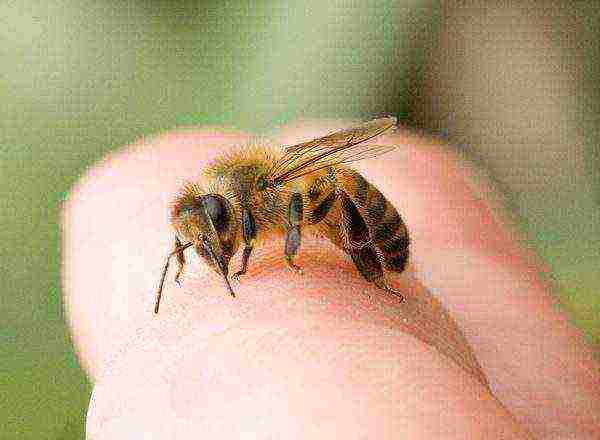
The development of allergies is influenced by some proteins (hyaluronidase and phospholipase), amines (histamine), peptides (melitinn). At the same time, these components, along with others, have a favorable effect on the human body. Each of them has different properties.
What a beneficial effect for a person
These include:
- Anti-inflammatory and antibacterial effect.
- Sedative the effect.
- Normalization blood pressure and improved heart function.
- Stabilization hormonal levels.
- Improving overall protective functions organism.
Together with this, the constituent components functionally treat many diseases.
- Thinning the blood, reduce clotting, prevent vascular occlusion.
- Improve resorption wounds, scars, adhesions.
- Stabilize work kidneys.
- Reduce symptomatology with arthrosis, radiculitis, osteochondrosis.
- Promote a good job nervous system.
- Have an effect in the treatment of female and male ailments genitourinary system.
- Affect the fight against overweight.
The branch of traditional medicine that studies and practices treatment with the help of "sweet" insects is called "apitherapy".
When resorting to this technique, it is important:
- Possess a medical certificate about the presence of allergies, in principle, about the reaction to one-time and massive bee stings.
- Contact only experienced professionals in this area and be observed with them.
All processes resulting from the interaction of this hardworking insect with a person are purely individual. You need to be informed about the dangers and state of your health, take precautions and continue to love nature to the fullest.

